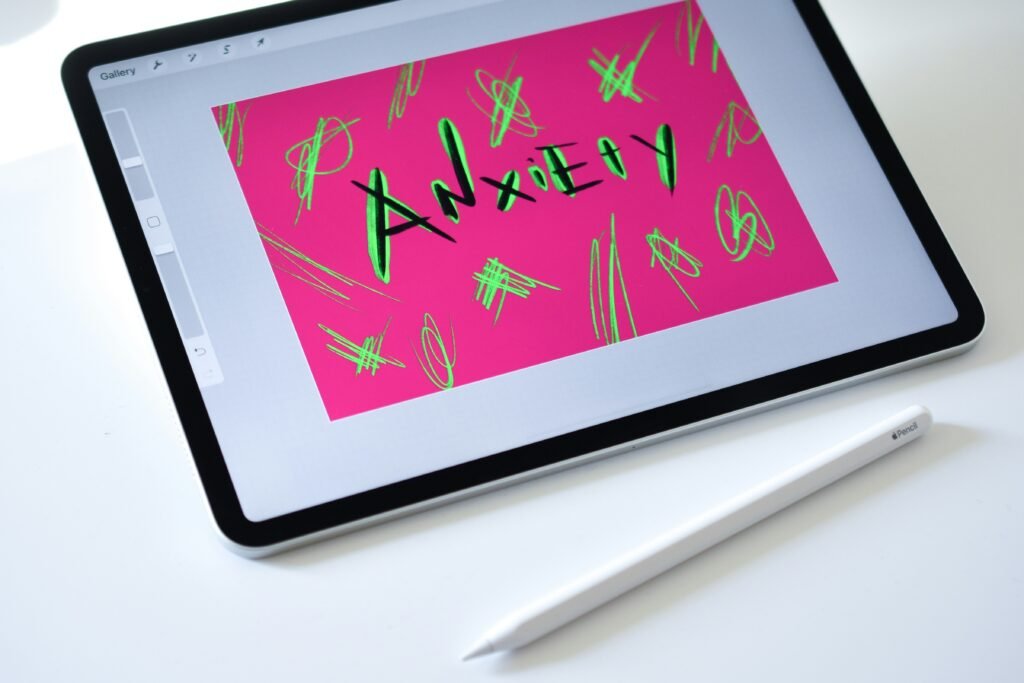In a world that is constantly connected, it’s not surprising that many of us find ourselves experiencing anxiety. The constant stream of notifications, emails, and messages can leave us feeling overwhelmed and stressed. But fear not, there are ways to manage this anxiety and find a sense of balance in our digital lives. By setting boundaries, practicing mindfulness, and prioritizing self-care, we can regain control over our constant connectivity and cultivate a healthier relationship with technology. So, if you’re looking for ways to ease the anxiety that comes with being constantly connected, read on for some helpful tips and strategies.
Understanding Constant Connectivity Anxiety
Defining constant connectivity anxiety
Constant connectivity anxiety is a term used to describe the stress and anxiety that arises from being constantly connected to technology. This refers to the feeling of always needing to be online, checking notifications, emails, and social media platforms, even when it may not be necessary or beneficial. It is a modern-day phenomenon that has become increasingly common in today’s digital world.
Causes of constant connectivity anxiety
There are several factors that contribute to constant connectivity anxiety. One of the main causes is the fear of missing out (FOMO). With the constant stream of information and updates available online, there is a fear of not being up to date or not being included in social activities. This fear drives the need to constantly stay connected. Additionally, the pressure to be reachable and responsive at all times, both personally and professionally, can also contribute to constant connectivity anxiety.
Symptoms of constant connectivity anxiety
Constant connectivity anxiety can manifest in various ways. Some common symptoms include feeling restless or uneasy when not connected to technology, constantly checking for notifications, experiencing a sense of panic or anxiety when separated from devices, difficulty focusing or being present in real-life situations, and negative effects on mental and physical health. It is important to recognize these symptoms and take steps to address them for the sake of overall well-being.
Effects of Constant Connectivity Anxiety
Impact on mental health
Constant connectivity anxiety can have a significant impact on mental health. The constant need to be connected can lead to increased stress levels, feelings of overwhelm, and difficulty relaxing or unwinding. It can also contribute to feelings of loneliness or isolation, as the virtual world can sometimes replace real-life social interactions. Additionally, the continuous exposure to negative or triggering content online can exacerbate anxiety and lead to a negative spiral of thoughts and emotions.
Impact on physical health
In addition to affecting mental health, constant connectivity anxiety can also take a toll on physical well-being. Spending excessive amounts of time in front of screens can lead to problems such as eye strain, headaches, and disrupted sleep patterns. The sedentary behavior associated with excessive screen time can also contribute to a more sedentary lifestyle, which can negatively impact physical health and increase the risk of conditions such as obesity and cardiovascular disease.
Impact on personal relationships
Constant connectivity anxiety can harm personal relationships as well. Being overly focused on technology can lead to a lack of presence and engagement in real-life interactions. It can cause distractions during conversations, decrease the quality of communication, and create a sense of disconnect from loved ones. The constant need to be connected can also prevent individuals from fully enjoying quality time with friends and family, leading to decreased satisfaction and strain on these relationships.

Recognizing Your Digital Overload
Assessing your screen time
To start managing constant connectivity anxiety, it is important to assess your screen time. Take note of how much time you spend on your devices each day or week, and evaluate if it feels excessive or detrimental to your well-being. Tracking your screen time can help you gain awareness of your habits and identify areas where you may need to make changes.
Identifying personal triggers
Identifying personal triggers is another important step in recognizing your digital overload. Reflect on what specific situations or emotions prompt you to reach for your devices. It could be boredom, stress, or even a fear of missing out. By understanding your triggers, you can develop strategies to address them and find healthier alternatives to cope with these emotions or situations.
Recognizing signs of digital overload
Being able to recognize the signs of digital overload is crucial in managing constant connectivity anxiety. Some signs include feeling a sense of agitation or restlessness when separated from technology, experiencing difficulty concentrating or focusing on tasks, utilizing technology as a form of escape or avoidance, and neglecting real-life responsibilities or relationships. Pay attention to these signs and make a conscious effort to address them to create a healthier relationship with technology.
Setting Healthy Boundaries
Designating tech-free zones
One effective way to manage constant connectivity anxiety is to establish tech-free zones in your daily life. Designate specific areas or times where technology is not allowed. For example, you could make your bedroom a device-free zone to promote better sleep and relaxation. Having designated tech-free zones creates space for mindfulness and connection with the present moment.
Establishing digital detox periods
In addition to tech-free zones, it is beneficial to establish regular digital detox periods. These are dedicated times where you consciously disconnect from technology for a specified period, such as a few hours or even an entire day. During these detox periods, engage in activities that bring you joy, such as reading, spending time in nature, or engaging in hobbies that do not involve screens. This practice allows for mental and emotional rejuvenation, reducing constant connectivity anxiety.
Managing notifications and alerts
Managing notifications and alerts on your devices can also help in setting healthy boundaries. Limit the number of apps or platforms that have permission to send notifications, and customize the settings to minimize distractions. Consider turning off non-essential notifications during certain hours or when you need to focus on other tasks. By taking control of your notifications, you can reclaim your time and reduce the constant urge to be connected.

Practicing Mindfulness
Engaging in mindful activities
practicing mindfulness is a powerful tool in managing constant connectivity anxiety. Engage in activities that promote present-moment awareness and mental relaxation. This could include activities such as yoga, tai chi, or walking in nature. By consciously engaging in these activities without distractions, you can train your mind to be more focused and present.
Utilizing meditation and deep breathing
Meditation and deep breathing exercises are effective techniques to cultivate mindfulness and combat constant connectivity anxiety. Find a quiet space, close your eyes, and focus on your breath. Allow thoughts to come and go without judgment, returning your attention to the breath whenever your mind wanders. Regular meditation practice can help develop a calmer state of mind, reducing anxiety and promoting overall well-being.
Being present and focused
In addition to specific mindfulness practices, simply being present and focused in everyday activities can help manage constant connectivity anxiety. When engaging in conversations, put away devices and give your full attention to the person in front of you. Practice active listening and avoid the temptation to check your phone or other devices. By being fully present in each moment, you can cultivate a deeper sense of connection and reduce the anxiety associated with constant connectivity.
Building Supportive Habits
Prioritizing self-care
Prioritizing self-care is crucial in managing constant connectivity anxiety. Make time for activities that nourish and rejuvenate you, such as exercise, adequate sleep, and healthy eating. Set boundaries around your self-care practices and ensure that you are taking care of your physical, mental, and emotional well-being. By investing in self-care, you can build resilience and better cope with the challenges of constant connectivity.
Engaging in offline hobbies and activities
Engaging in offline hobbies and activities is an excellent way to take a break from technology and reduce constant connectivity anxiety. Find activities that bring you joy and fulfillment, such as reading, painting, cooking, or spending time in nature. These hobbies not only provide a healthier outlet for relaxation but also develop new skills and promote personal growth outside the digital realm.
Connecting with supportive communities
Connecting with supportive communities can be invaluable in managing constant connectivity anxiety. Seek out like-minded individuals who share similar goals or struggles in finding balance with technology. Join online or in-person communities where you can share experiences, exchange tips, and support one another in creating a healthier relationship with digital devices. Building a supportive network can provide encouragement and accountability in your journey towards managing constant connectivity anxiety.

Harnessing Technology to Manage Anxiety
Using digital tools for self-care
Ironically, technology can also be used to manage anxiety and promote self-care. There are numerous apps, websites, and digital tools available that provide guided meditations, relaxation exercises, and stress management techniques. Explore these resources and find ones that resonate with you. Utilize technology as a tool to cultivate mindfulness and enhance your well-being.
Exploring anxiety management apps
In addition to general self-care tools, there are specific anxiety management apps available that can help in managing constant connectivity anxiety. These apps often include features such as mood tracking, breathing exercises, and guided mindfulness practices tailored to reduce anxiety. Explore different apps and find ones that align with your needs and preferences.
Tracking and setting limits on screen time
Technology can also assist in tracking and setting limits on screen time. There are apps and features built into devices that allow you to monitor and control your usage. By setting realistic limits on your screen time, you can regain control over your digital habits and reduce the anxiety associated with constant connectivity. Experiment with different strategies and find what works best for you.
Seeking Professional Help
Recognizing when to seek help
While self-management strategies can be effective, it is important to recognize when it is necessary to seek professional help. If constant connectivity anxiety becomes overwhelming to the point that it interferes with your daily functioning, relationships, or overall well-being, it may be time to consult with a mental health professional. They can provide guidance, support, and personalized strategies to manage anxiety and create a healthier relationship with technology.
Consulting with a mental health professional
When seeking professional help, it is important to consult with a licensed mental health professional. They are trained to assess and treat anxiety disorders, including constant connectivity anxiety. They can provide an accurate diagnosis, offer evidence-based therapies or interventions, and create an individualized treatment plan to address your specific needs.
Exploring therapy options
Therapy can be an effective tool in managing constant connectivity anxiety. Cognitive-behavioral therapy (CBT), for example, can help identify and challenge negative thoughts and behaviors related to constant connectivity. Other therapy modalities, such as mindfulness-based stress reduction (MBSR), can also be beneficial in managing anxiety and promoting a healthier relationship with technology. Work with your mental health professional to explore therapy options that align with your goals and preferences.
Creating Healthy Work-Life Balance
Setting boundaries for work-related technology
Creating a healthy work-life balance is essential in managing constant connectivity anxiety. Set clear boundaries around the use of technology for work purposes. Establish designated work hours and avoid checking emails or work-related messages outside of those hours. Communicate your boundaries to colleagues and supervisors and strive for a balance that allows for downtime and personal life.
Practicing effective time management
Effective time management is key to achieving a healthy work-life balance and reducing constant connectivity anxiety. Prioritize tasks, set realistic deadlines, and delegate when necessary. Use productivity tools or techniques to stay focused and maximize efficiency. By effectively managing your time, you can create more opportunities for relaxation, leisure activities, and quality time with loved ones.
Separating work and personal life
One of the challenges of constant connectivity is the blurred line between work and personal life. It is important to consciously separate the two to maintain balance and reduce anxiety. Create physical or symbolic boundaries between your work and personal spaces. For example, designate a specific area in your home for work-related activities and avoid bringing work devices into your personal spaces. By separating work and personal life, you can create a sense of clarity and reduce the constant pressure to be connected.
Conclusion
Reflecting on personal experiences
Constant connectivity anxiety is a real and growing concern in today’s digital age. It is crucial to reflect on your personal experiences and recognize the impact that constant connection has on your mental, physical, and relational well-being. By acknowledging the presence of constant connectivity anxiety in your life, you can take the necessary steps towards managing it effectively.
Committing to managing constant connectivity anxiety
Managing constant connectivity anxiety requires a commitment to prioritizing self-care, setting boundaries, and practicing mindfulness. It requires a shift in mindset and a conscious effort to create a healthier and more balanced relationship with technology. While it may take time and persistence, committing to managing constant connectivity anxiety is a worthwhile investment in your overall well-being.
Embracing a healthier and balanced relationship with technology
In conclusion, it is vital to embrace a healthier and balanced relationship with technology to manage constant connectivity anxiety. This includes setting boundaries, prioritizing self-care, and practicing mindfulness. By recognizing the impact of constant connectivity on mental health, physical health, and personal relationships, and implementing strategies to address these concerns, individuals can find greater peace and well-being in today’s hyper-connected world. Remember, you have the power to take control of your digital habits and create a life that is balanced, fulfilling, and free from constant connectivity anxiety.

Hello, I’m Kelly Joseph, the author behind Optimum Mindset for an Optimal Lifestyle. Welcome to our website, where we dive deep into the world of mindfulness techniques and productivity hacks. With a mission to help you achieve a more fulfilled life, we offer a comprehensive guide to mastering the art of an optimum mindset. I am passionate about enhancing mental resilience, fostering positivity, and unlocking the potential for goal achievement. This site is a treasure trove of practical tips and strategies that will empower you to live life to the fullest. Join me on this journey of self-discovery and personal growth.

